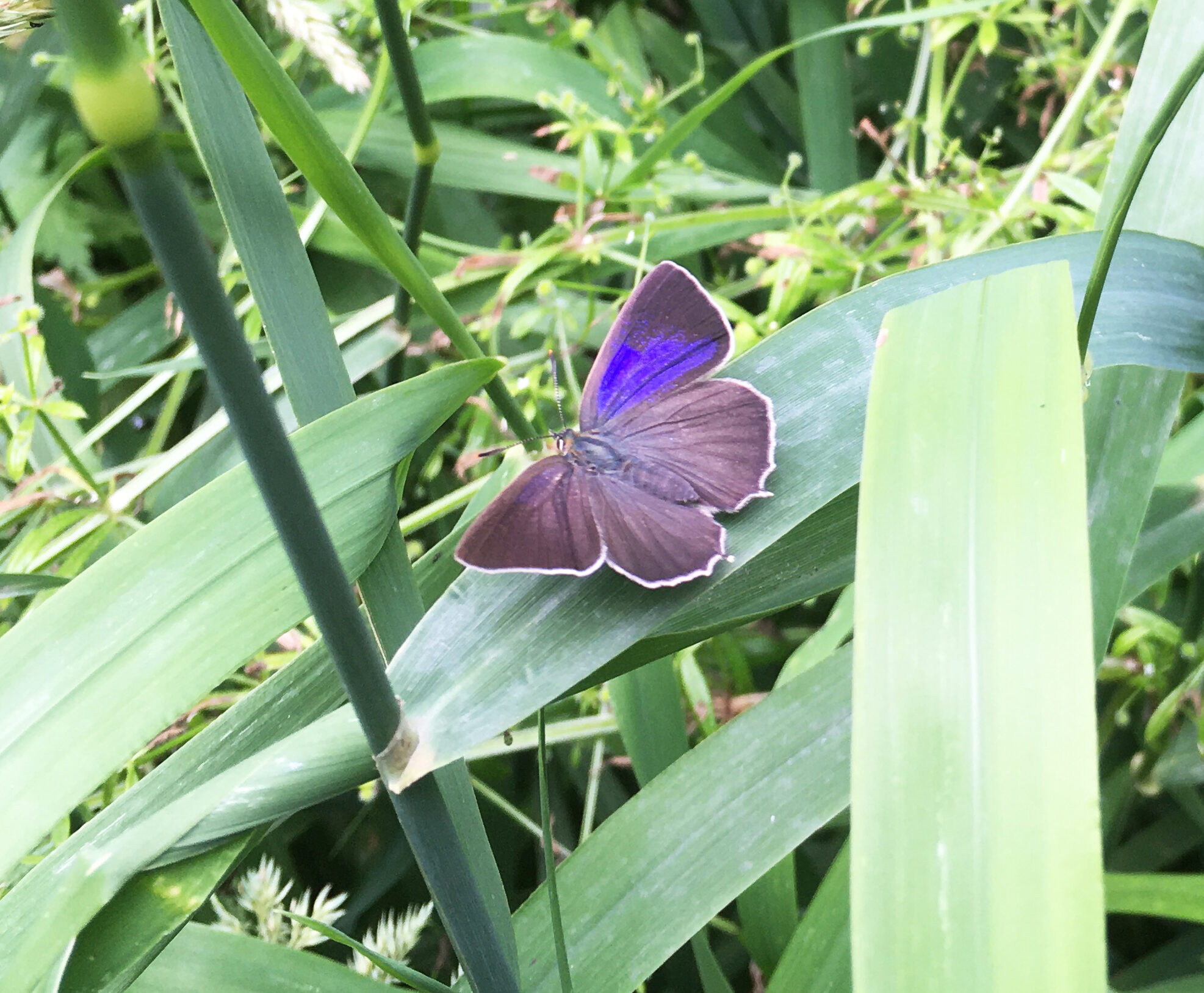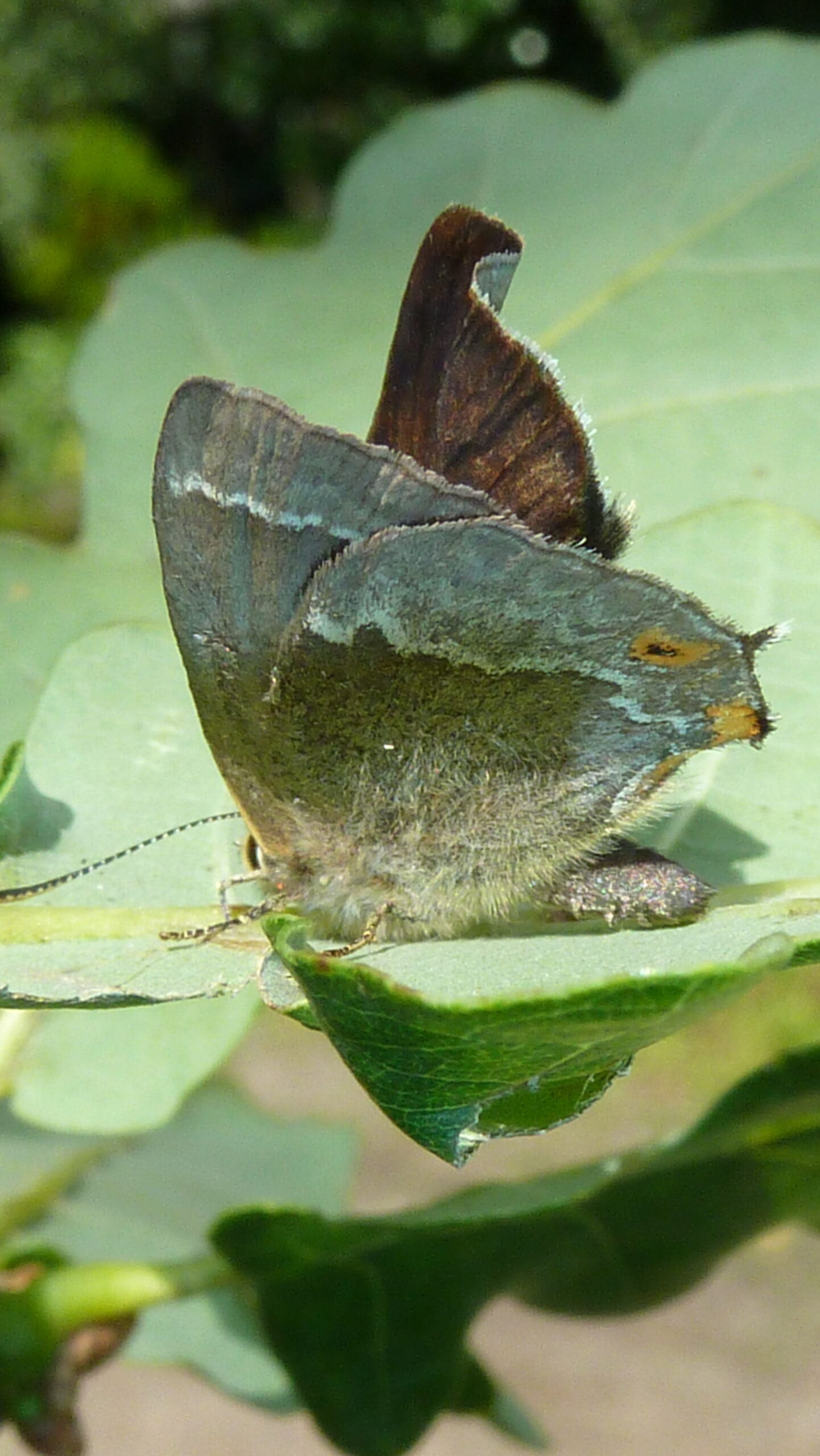(Favonius quercus)
An elusive butterfly, the oak specialist Purple Hairstreak spends most of its life high up in the oak canopy.
Fast facts
- Common name(s)
- Purple Hairstreak
- Scientific name
- Favonius quercus
- Habitat
- Woodland
- Diet
- Oak buds (caterpillar). Honeydew and occasionally nectar (adult)
- When to see it
- July – August
Identification
As its name suggests, the Purple Hairstreak has a purple sheen on its upperwings. The extent of purple varies between sexes. A glossy purple sheen covers most of the males’ wings while females have two smaller purple patches on their forewings.
In both sexes, the underside of the wings have a white streak that is edged in black. Unlike the White-letter Hairstreak, this white streak is not W-shaped. There are also two orange spots at the base of the wing underside.
Eggs are unlikely to be seen but are said to resemble a sea urchin in appearance.
Did you know?
The Purple Hairstreak is one of 22 butterfly species present at the reserve. However, unlike most butterflies, this species will not be found at the reserve meadows. Rather, you will find the Purple Hairstreak in the woodland and high up in the Oak canopy.

Ecology and behaviour
The Purple Hairstreak is closely associated with Oak, spending most of its life high up in the canopy. This species is therefore likely to be found in woodland or in urban areas where there is Oak. Although it is the most common of the Hairstreak butterflies, it is overlooked due to this ‘arboreal-like’ habit.
The caterpillars feed exclusively on species of Oak. Eggs are laid singly on buds where sheltered and in full sun. As mature trees have larger buds, eggs are most often found on more mature trees. Initially, the caterpillar lives within the developing buds but later emerges and protects itself within a web. Bits of debris and material often fall onto the web, providing camouflage against predators.
Adults are particularly active in full sunshine and can be seen in large numbers flitting around Oak trees. While adults primarily feed on honeydew, during dry periods adults are driven down to lower levels in search for nectar.
At Gosforth Nature Reserve
Using Oak to feed and breed, the presence of Oak in the reserve’s woodland is of vital importance for this regionally uncommon butterfly. The best time to look out for the hairstreak is early August, particularly in sunny and still conditions.
Along the southern boundary walk, individuals can be seen flittering around the Oak trees and drier conditions can bring them closer to view. If you see butterflies flittering high up around Oak trees, it is almost certainly the Purple Hairstreak!
